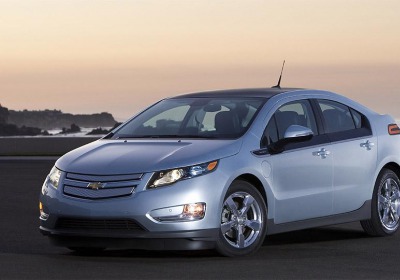Carmakers brace for stricter CAFE rules in 2016
Thu, 10 Mar 2011
Corporate Average Fuel Economy is a dicey subject for carmakers of all sizes. New federal requirements set to take effect for the 2016 model year require a fleet average of 35.5 mpg. As the deadline nears, the question looms: Who is in good shape, and who is far from it?
It’s not a simple answer as NHTSA, at the request of Congress, breaks down its vehicles into three major categories: domestically produced passenger cars, imported cars and light trucks.
That means even though carmakers have the spotlight 35.5-mpg figure to hit, there’s a lot of math that goes into that. CAFE is also weighted by sales, meaning companies must make more fuel-efficient cars and convince the public to buy them. CAFE is computed differently from EPA ratings, which appear on window stickers at dealerships.
In simple terms, it’s easier to attain higher CAFE figures. The increased fuel-economy requirements could save 1.8 million barrels of oil, the government says.
The most recent figures released at the end of October indicate that Honda and Toyota are in the best shape among the six largest car companies that sell in the U.S. market. Honda’s domestically made cars get 34.7 mpg on the strength of fuel-sippers such as the Civic and the Accord that are built in Ohio, NHTSA said. Honda’s imported vehicles, such as the diminutive Fit, check in with 40.9 mpg. Toyota turns in 36.4 mpg for cars, thanks in part to the U.S.-made Camry and Corolla, and imported cars, such as the Prius, turn in 44.4 mpg.
U.S. carmakers are in a relatively similar position, with Ford racking up 32.3 mpg for its locally made cars and 27.6 mpg for imports. As sales of the Focus and the Fiesta grow, those numbers should improve. Cross-town rival General Motors hits 30.6 mpg domestic and an impressive 34 mpg for imports. Chrysler’s domestics register 28 mpg.
In the luxury segment, BMW registered 28.7 mpg and Daimler, parent of Mercedes-Benz, scored 26.9 mpg.
The light-truck segment is considerably closer, with Toyota getting 26 mpg for its fleet, followed by GM (25.4 mpg), Chrysler (24.1 mpg) and Ford (24 mpg).
The kicker is that stiffer regulations are still several years from reality, and firms are hard at work developing new technology to cope. Innovations such as Ford’s EcoBoost, which employs small engines with turbocharging, will help the Blue Oval. GM has worked to develop its fleet of smaller vehicles and continues to wring fuel-economy gains out of cars such as the Chevrolet Cruze. Chrysler also likely will gain traction from sales of new small cars developed with Fiat technology.
Electric cars, many of which have the potential to use little or no fuel, also will bolster companies trying to remain in compliance with CAFE regulations. The Chevy Volt launched last year, and Toyota has revealed ambitious plans to expand its Prius lineup in the coming years.
By Greg Migliore

